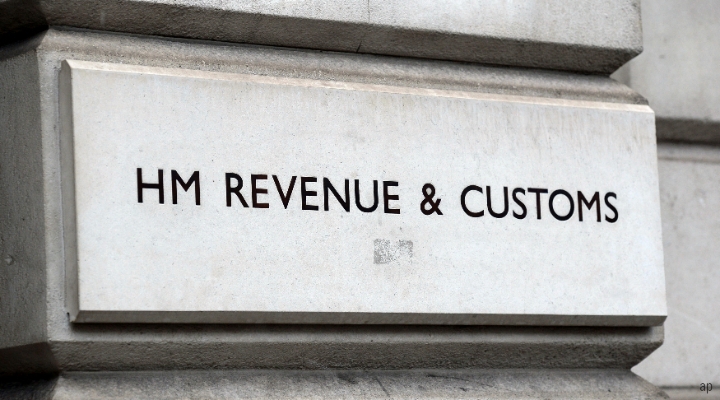This article is part of Morningstar’s Guide to Financial Planning, your handbook for making the most of your tax-free investing opportunities, reducing your annual – and lifetime – tax bill while keeping HMRC onside.
Emma Wall: Hello, and welcome to the Morningstar series, 'Ask the Expert.' I'm Emma Wall, and here with me today is Tom McPhail, Head of Pensions Research for Hargreaves Lansdown.
Hello, Tom.
Tom McPhail: Hello, Emma.
Wall: So we've got a month to go before the end of the tax year, and of course, a month to go before pensions freedom, where everybody is apparently going to be able to get their hands on their cash. Is it going to be really like that?
McPhail: A bit. Sort of yes and sort of no, and there are a lot of really good things happening with these new freedoms; hugely popular; a lot of anticipation from our clients, from investors as to how they're going to be able to use these new freedoms. So that’s great. But they've all been introduced in a tearing hurry. I mean, the Government has only announced this what 13 months ago.
So I think first message is: not every pension provider, not every pension company is going to be ready for the April 6, and so this might mean that investors will ring up their pension providers saying like, can I have my money now, please, and they're going to have say no.
Wall: Let's have a look at what people are doing right this second, because, of course, after April 6, it's a bit of an unknown. We are not there yet. So looking at the moment, if you're coming up to retirement, if we look at the last quarter, the last three months of 2014, there were still some people buying annuities, which I think surprised the industry a bit, bearing in mind that you can't get your hands on your cash not that too far a future.
McPhail: You are absolutely right. And we have seen annuity sales collapse. They are down more than 50% on where they were a year ago. So there’s a sea-change in the demand for annuities, but as you say, people are still buying annuities. And this is because at the end the day a lot of people still value the guarantee that an annuity provides.
It is one of the very few financial products that absolutely says that you put your money here, you will get an income for the rest of your life. And we know that many retired investors are quite conservative. They don’t want to take risks. And even if they are going to use some of their investment money to invest in the markets and take some investment risk, they want some security there as well, and indeed having some security makes it easier to take some risks. So we never thought that annuity demand would fall away completely and, in fact, from April onwards we expect that we might see annuity turnover start to pick up again a little bit.
Wall: And that’s because they still are the only product that absolutely 100% guarantees a fixed-income for life?
McPhail: Absolutely correct, and they are backed by the Financial Services Compensation Scheme in that regard as well. So if you want that security, that’s the road to go down. Of course, in the process you relinquish control of your capital, you'll lock yourself in for the rest of your life. There are downsides to an annuity as well, but if you want the certainty, that's the place to go.
Wall: Let's have a quick chat about the alternative products then, because there have been quite a few launched on to the market, plus there has been some asset managers turning around and saying, hey, what about this existing product I have, this multi-asset income fund, your capital could even increase with this?
McPhail: Yes, absolutely. And so alongside the annuity market, we are seeing a fairly rapid growth in demand for drawdown arrangements where you're keeping your money invested in the markets and drawing an income from the fund. And so there's been a certain amount of expectation that we would see some astonishing new products being launched. And might that hasn't happened, you can't magically create sort of zero risk, high-return products out of nowhere. Who knew?
But what we are seeing is as you say the asset managers try to put together portfolios, investments, packages and investments that will work well for retiring customers who are looking to draw an income off the fund. But then the critical thing is how much income can you draw and what happens if you start to turn the dial up on that income too much?
Wall: And that's a sort of thing that people can be preparing themselves with now, isn't it. Taking a look at their investment portfolio and looking at the natural yield that that is providing, and coming to terms with the fact that if they want to be more, as you say, the capital will dwindle?
McPhail: Absolutely. So you can prepare now, consolidate your investments into one place. So you've got all your pension pots together and you're ready to go. You can be looking at the annuity market, if you want to allocate any cash to the annuity. And then looking at the drawdown market, looking at the investment market; Where do you want that money? What funds do you want in? What is the natural yield on those investments? Because that represents the safe withdrawal rate you can take from your drawdown arrangement.
If you start taking more than that and typically we're looking at sort of 3% to 4% a year income yield, that kind of territory. But if you start taking more than that, you're going to be eating into the capital. And then if there is a market downturn, you run the risk that the fund can drop pretty rapidly, you might never make that ground up again. So, absolutely the kind of stuff that people should be looking at right now.
Wall: And also tax implications, isn't that right? Those are one of the things that we do know is a certainty in the new tax year and that's tax bands. What should people be doing now?
McPhail: Absolutely. And there the key message is, you might be looking to draw some money out before retirement and if that's the case, you're still drawing a salary, you're drawing an income, any lump sums above the 25% tax free that you're entitled to from your pension, any lump sums beyond that will get added to your income in the current year and will be treated as if they were earned income.
So even someone on, say, a £30,000 a year salary, if they took £30,000 out of their pension pot, which will assume a huge amount, that would immediately push them into the high rate tax band, they would end up paying a significant slice of that pot of money to the taxman.
So, right now, if you're already thinking about what you're going to do with that pot of money and how much you want to take out, you also need to run through the tax calculations, get it checked if you're not sure how it works. See what the tax liability might be, perhaps look at spreading that money across more than one tax year, if necessary. And of course, adjust your spending plans accordingly.
Wall: Tom, thank you very much.
McPhail: Thank you.
Wall: This is Emma Wall for Morningstar. Thank you for watching.





























